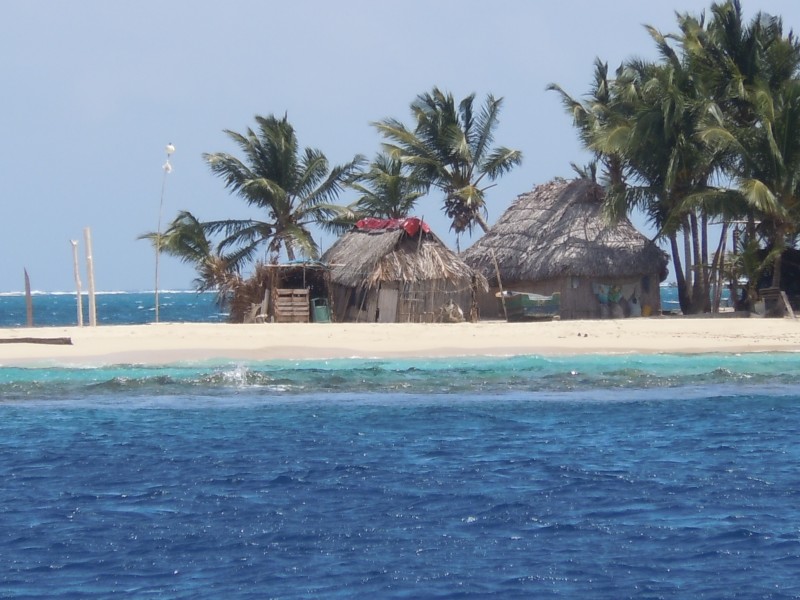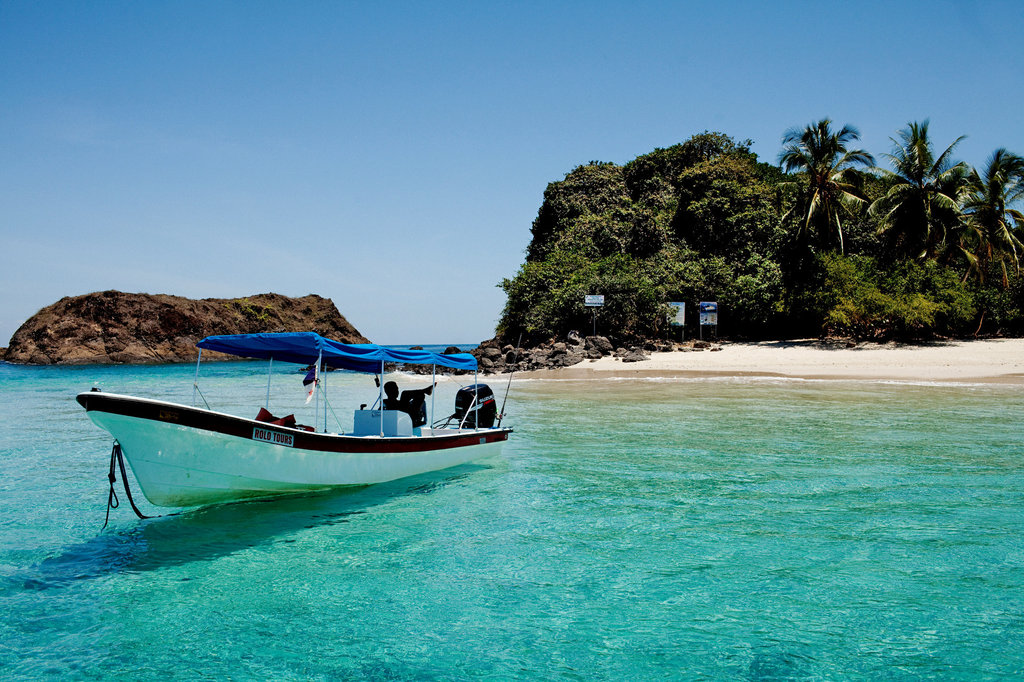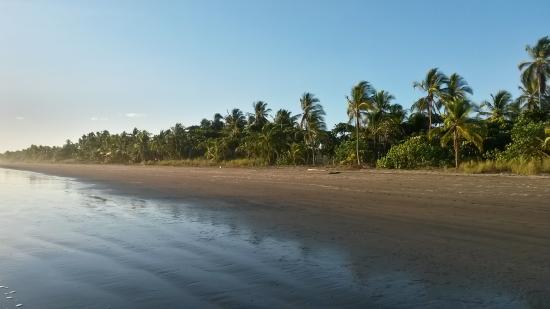Limitación de Altura
No son demasiadas pero sí algunas de las más populares, las atracciones con requerimientos de altura ponen un límite objetivo a la posibilidad de subir de muchos chiquititos.
En esta sección un breve repaso de su funcionamiento y la lista completa de Walt Disney World y Universal Orlando.
DETERMINACION
Todas las atracciones que verán listadas más abajo muestran con divertidos formatos la altura mínima requerida para subir.
Esas marcas se ubican habitualmente en la zona de acceso a la atracción, permitiendo que los niños puedan medirse y apreciar si han pasado o no la prueba de altura.
Un empleado del parque suele estar en el área y le pedirá al niño que pueda presentar dudas que se pare en el lugar indicado para medirlo.
Luego, ya en la zona de «embarque» de cada atracción, volverán a ver dispositivos similares para poder medir nuevamente al niño de altura dudosa que por alguna razón haya avanzado en la fila sin medirse al ingresar.
En determinadas atracciones pueden jugar dos tipos de limitación de altura: para viajar sólo (más centímetros) o para viajar acompañado (menos centímetros).
Excepto que lleven zapatos con suelas o tacos muy altos, todas las mediciones se realizan con el calzado colocado.
El nivel de flexibilidad en este ritual es igual a cero: o llegan o no llegan. Y si no llegan no podrán subir.
ATRACCIONES PARQUE POR PARQUE
Estas son las atracciones con requerimientos de altura en los parques de Walt Disney World Resort
Los colores en la columna 2, 3 y 4 indican el parque al cual pertenece cada atracción: púrpura Magic Kingdom, gris Epcot, azul Hollywood Studios y verde Animal Kingdom
Estas son las atracciones con requerimientos de altura en los parques de Universal Orlando
Los colores en la columna 2, 3 y 4 indican el parque al cual pertenece cada atracción: bordó Islands of Adventure y azul oscuro Universal Studios.
Fuente: viajeromagico.com
Cambios en el calendario de parques Disney para Abril y Mayo 2019
Modificaciones en horarios de cierres para Abril y Mayo. Algunas funciones dobles de Rivers of Light.
Disney modificó algunos horarios de los meses de Abril y principios de Mayo de 2019.
Las modificaciones se dan exclusivamente en Magic Kingdom y en Animal Kingdom.
En la mayoría de los casos se trata de horarios de cierre de una a tres horas más tarde a los previamente publicados.
Los efectos de Semana Santa se harán sentir y Magic Kingdom clausurará sus actividades a la medianoche en buena parte del mes (con un par de extra magic hours concluyendo 2am).
También se verifican algunas aperturas 8am, más tempranas a las previamente publicadas.
Animal Kingdom programa ahora funciones dobles de Rivers of Light entre el 6 y el 28 de Abril.
En Mayo, se verifican cierres más tarde para Animal Kingdom entre el 1 y el 4.
Fuente: viajeromagico
Las Reglas de Orlando
Algunas reglas puntuales son diferentes en Estados Unidos y el estado de La Florida.
Conocerlas es fundamental para evitar errores y multas. En esta sección un repaso rápido a las principales. Información para tomar nota y decisiones.
PANORAMA
Algunas cosas cambian en el mundo mágico de Orlando.
Las medidas de temperatura, longitud y distancia son diferentes a muchos países de habla hispana.
La nafta se vende en galones y no en litros.
Las reglas de tránsito tienen unos pocos detalles que siempre es importante conocer.
En esta sección un repaso rápido a ese Código Especial para llegar preparados y no cometer errores.
TEMPERATURA
La temperatura será un dato muy importante durante las vacaciones, especialmente si viajan en alguna de las estaciones extremas: invierno o verano.
Sea que se hospeden adentro o afuera de Disney , el canal televisivo “Weather Channel” o una aplicación de tiempo en el celular serán un paso obligado para conocer el estado actual del tiempo y el pronóstico para los días sucesivos.
Esos datos pueden ayudar a programar días venideros, desde cuando ir al parque de agua hasta cómo ubicar el día de compras o el viaje a Tampa para visitar Bushgardens.
El estado del tiempo durante el día, también determinará la cantidad de ropa con que dejarán la habitación.
Llevar durante toda la jornada inútilmente una campera abrigada por los largos kilómetros que suele demandar la caminata en los parques puede ser la diferencia entre pasar un día excelente o uno incómodo.
Toda la información mencionada en los párrafos anteriores, cuando su fuente sea local , la verán expresada en grados Farenheit (°F) y no en grados Centígrados (°C) como es constumbre en los países de habla hispana.
Es útil entonces conocer la fórmula de conversión para poder ubicarse al tomar nota de la temperatura actual o su pronóstico en Farenheit:
1) Tomen el número de grados Farenheit y le restan 32
2) Al resultado deben dividirlo por 9 primero y multiplicarlo por 5 después
El número obtenido será el equivalente en grados centígrados.
Lo ejemplificamos para que se entienda mejor:
Si el Display de control del aire acondicionado de la habitación está en 68 ° F:
1) 68-32=36
2) 36/9=4
3)4 x 5= 20 °C
El aire está puesto demasiado frío en sólo 20 ° C. Demasiado frío. Para subirlo a un más confortante nivel de 24° C deberán hacer el proceso inverso: 24/5×9+32=75° F (redondeando).
LAS DISTANCIAS, AL SUELO Y EN AUTO
Otras unidades de medida que difieren respecto a tradicionales en países de habla hispana, son las vinculadas a la longitud.
Las limitaciones de altura en las atracciones se expresan en pulgadas.
Una pulgada equivale a algo más de 2,5 cm, exactamente 2,54cm.
Las conversiones más habituales:
40´´=101,6cm; 38´=96,52cm; 44´´=111,76cm y 48´´=121,92cm
Las distancias, por ejemplo entre ciudades o puntos de interés, están expresadas en millas y la velocidad (tanto en el tablero del auto como en los carteles de máxima y mínima) en millas por hora.
Una milla equivale a 1,6 km.
REGLAS DE TRÁNSITO
Las normas de tránsito en la zona de Orlando son similares a la de los países de habla hispana.
Sin embargo algunas particularidades deben ser destacadas para evitar bocinazos de otros conductores o multas sorpresivas.
Si arriban a una intersección con semáforo en rojo debeán detener totalmente el vehículo, pero luego sin esperar el pase a verde podrán girar hacia a la derecha. Esta regla tiene su excepción sólo ante una indicación expresa en contrario.
De lo anterior se deriva que si no girarán a la derecha, no lleguen al semáforo en el carril ubicado en ese extremo pues se transformarán en “tapón” de quienes sí quieren girar.
Todos usen cinturones de seguridad, los niños menores de 3 silla obligatoria, entre 3 y 5 al menos algún adaptador para que viajen seguros
El límite de velocidad tiene una tolerancia adicional de 5 millas por hora. En consecuencia, si la máxima es 70 m/h, llevando el carro a 76 m/h se estarán exponiendo a sufrir una multa severa.
Las cabinas de peaje no suelen requerir cambio justo (muy pocas no tienen cajero humano y requieren el pago con monedas), si pasan por el lugar sin barreras y no tienen el servicio de prepago (en muchos casos su activación es automática, depende de la empresa de alquiler), la multa se cargará sin más a su auto y -por asociación- a la tarjeta de crédito presentada en la agencia de alquiler.
Cuando llueva debe prender las luces del auto sea cual sea la hora del día.
Al menos a la fecha en que esta sección está redactándose, no es necesario la licencia internacional de conducir en el estado de La Florida. El carnet emitido por el país de origen es suficiente aunque esté sólo en español. Confirmen si la situación no varió a la fecha de su viaje.
Si observan un agente policial a la vera derecha del camino realizando un procedimiento con otro automovilista, inmediatamente deben moverse al carril izquierdo y disminuir la velocidad hasta llevarla al menos a 20 millas por debajo de la máxima vigente en ese lugar. Esta normativa es para prevenir accidentes entre quienes están parados en un procedimiento y quienes vienen circulando. Si no realizan la maniobra pueden sufrir una multa severa.
ESTACIONES LITROS Y GALONES
Cuando pasen por una estación de gasolina verán el costo en dólares para los distintos tipos de combustible: regular, plus y premium.
No se asusten, esos precios no están expresados por litros sino por galones.
Un galón equivale a algo menos de cuatro litros (3,78 para ser exactos).
Al llegar a la estación de gasolineria en casi todos los casos deberán cargar el combustible ustedes mismos.
Para ello tienen que optar entre efectivo o tarjeta de crédito.
En el primer caso, recurrir antes al puesto interno de la estación, avisar al empleado cuál es el surtidor elegido y pre-pagar el monto deseado. Si lo que desean es cargar el tanque completo simplemente dejen un billete de U$S 100, carguen el tanque y luego vuelvan por el recibo y el vuelto.
Si pagarán con tarjeta de crédito simplemente deben deslizar la misma sobre la lectora magnética que tiene cada surtidor y elegir la gasolina a despachar.
En cualquier caso para cargar, destraben la pistola de carga y levanten el receptáculo de plástico donde la misma se ubica, ello habilitará el despacho del combustible.
De ser posible, elegir estaciones de gasolinas de marcas conocidas como Exxon, Shell, Mobil o Hess.
Fuente: viajeromagico
Panama The Best Beaches
Comarca Kuna Yala: This is the premier beach destination in Panama, with over 350 islands scattered off the Caribbean coast that offer picture-postcard beaches with powdery white sand, coral reef, piercing turquoise water, and clusters of swaying palm trees. The colorful Kuna indigenous population administers this province, and their fascinating culture is part of the reason to visit the region, too. The glitch is that scuba diving is prohibited, and lodging is mostly Robinson Crusoe rustic, but all you’ll want to do here anyway is swim, sun, and swing in a hammock.
Isla Bastimentos National Park, Bocas del Toro: Cayos Zapatillas, or the “Slippers Islands” (so-called because they resemble footprints), not only fulfill the beach lover’s fantasy with their soft sand backed by a tangle of jungle; they are also surrounded by a rich display of coral that attracts hordes of fish, providing good snorkeling. The park’s main island, Isla Bastimentos, offers terrific beaches with clean sand and blue water, such as Red Frog Beach, Wizard Beach, and Playa Larga, which can be reached by a short walk or hike, or by boat during the calm-water season from August through October.
Las Perlas Archipelago: Despite this Pacific archipelago’s proximity to Panama City, its top-notch snorkeling, white-sand beaches, and calm-water swimming conditions, the Pearl Islands are a relatively unsung beach destination. Outside of holidays and the hard-core summer, you won’t find crowds here, even during weekends. It’s also drier here during the rainy season.
Isla Coiba National Park: Beyond ranking as Panama’s number-one diving site, Isla Coiba National Park boasts fine beaches backed by dense jungle. Tiny islands such as Granito de Oro are so idyllic that midsize cruise ships make a stop here (which could spoil your day if you’re here independently). Even the beach fronting the park station seems too perfect to be true.
Las Lajas, Chiriquí Province: It’s not the most beautiful beach in Panama, but the water is the perfect temperature and produces just the right amount of waves for bodysurfing — though there’s little current. All of which means that Las Lajas is ideal for swimming, and since the beach measures more than 13km (8 miles) in length, you can walk forever. Rustic shacks and cheap restaurants are clustered on the beach at the end of the road, but it’s best to bring your own snacks. If you’re looking for a beach closer to David (and Boquete), try La Barqueta. Strong currents at this black-sand beach mean the water is not ideal for swimming, but it is lengthy like Las Lajas and good for walking, and there is a nature reserve here, too.
Playa Los Destiladores & Playa Venado, Azuero Peninsula: Of the multitude of beaches lining the coast of the Azuero Peninsula, these two are the cleanest and the most attractive, and they are within a 20-minute drive from each other. However, given the deforestation in the area, they are less “tropical” than other Panamanian beaches. Currents will occasionally churn up the water along the golden sand at Playa Destiladores, but a protected cove at Playa Venado means it’s calm enough for a toddler, and farther east crashing waves have converted the beach into a surfing hot spot. A major bonus here is the nearby picturesque town of Pedasí, and three gorgeous lodges.
Santa Clara & Farallón, Pacific Coast: These two are the most appealing beaches along the Pacific Coast, and the best for swimming. Best of all, they lie within a 2-hour drive of Panama City. The beaches’ water is bluer and the sand cleaner and whiter than its neighbors closer to the city.
By: frommers
7 Wet and Wild Ways to Experience Costa Rica
Recently, Costa Rica has climbed the ranks as one of the top destinations in world. Warm weather year-round, pristine beaches, rainforests, and vibrant nightlife; what’s not to love? Recent trends in ecotourism have only increased its popularity since Costa Rica has some of the most diverse wildlife and wilderness in the world.
“Rushing rivers, large lakes, and Pacific and Caribbean waters make it a playground for water enthusiasts.”
However, what seems to draw travelers to this Central American country year after year is the abundance of water sports that can be experienced nearly any time of year. If you can think of it, you can probably do it in Costa Rica. Rushing rivers, large lakes, and Pacific and Caribbean waters make it a playground for water enthusiasts.
Whitewater Rafting
Whitewater rafting is easily the most surprising water sport in Costa Rica. Rarely do you think of rushing rivers when you think of traveling in the Caribbean and Central America; however, Costa Rica features some of the best rapids in Central America.
Rapids on Costa Rica’s many rivers range from Class II, suited for novice rafters, to Class V rapids, which are for the river runners who are no strangers to intense rapids. Río Reventazón and the Río Pacuare are typically two of the best rivers for rafting down. Pay attention to the season, as parts of the Costa Rica rainy season, from June until October, can make for difficult conditions.
Surfing
The term “surfing” is subjective in Costa Rica as it has taken on many different forms. Avid surfers will find good waves up and down most of the Pacific and Caribbean coastlines. One of the best beaches in Central America, Manuel Antonio, is one of the better beaches for surfers and also has surf camps for beginners. Two other variations of surfing includes windsurfing and stand up paddle surfing. Located at the Base of Arenal Volcano, Lake Arenal has become the premier windsurfing destination in Costa Rica. Shops are located in the area to rent equipment or travelers can choose from a variety of windsurfing packages and camps.
Stand up paddle surfing is making a resurgence around the world, with Costa Rica being one of many destinations where it’s catching on at. The primary difference from traditional surfing is that it’s more laid back and you have the addition of a paddle. Since stand up paddle surfing doesn’t require big waves, it can be done along any of Costa Rica’s beaches, although Jaco and Tamarindo are a couple of the more popular spots.
Waterfall Rappelling
You’re not likely to be submersing yourself into the water while waterfall rappelling, however, this is one of the most extraordinary activities you’ll ever do. Combining rappelling with the beautiful, and often unspoiled, waterfalls of Costa Rica, this puts you upclose with the country’s waterfalls in a way that hiking can’t quite do.
While many of Costa Rica’s water sports can be experienced throughout different parts of the country, this isn’t the case with rappelling, or as it’s also called, canyoning. There are waterfall rappelling excursions within short drives of Arenal and Manuel Antonio, but the best location is Los Chorros Waterfall, a 180-foot cascading waterfall. The waterfall is located in a recreation area within an hour drive from San Jose.
Sea Kayaking
If you like water activities, but like something more low key, then sea kayaking is probably for you. While there are sea kayaking opportunities on the Caribbean side of Costa Rica, it’s more popular on the Pacific Ocean side when kayakers often go out at sunset.
It’s not unusual to see a group of kayakers floating along any number of bays on the Pacific Ocean. Most beaches have kayaks for rent along the beach that can be rented anywhere from an hour to a full day.
Diving
Many beach towns offer diving instruction for new divers, which typically includes certification and a minimum of a couple dives. Punta Uva and Puerto Viejo are both popular dive locations on the Caribbean side, though often recommended for intermediate to experienced divers. Coco, Tamarindo, and Isla del Cano are a couple of the better diving locations on the Pacific Ocean.
Boating
Boating is another subjective term as it spans a wide-range of meanings in Costa Rica. While Costa Rica is often overshadowed as a cruising destination because of the Caribbean Islands, many cruises make port up and down both coastlines. While sail boats are found going in and out of bays, boating in Costa Rica has often come to mean half-day catamaran tours or sunset cruises.
Many of the beach towns feature charter companies that can arrange private and group trips. Sunset cruises are often the choice of most travelers, usually taking guests out for a couple hours. While some may provide appetizers and drinks, others allow guests to bring on their own alcoholic beverages.
Fishing
Of all the water activities in Costa Rica, none is a way of life like fishing is. Fishing is often the most popular activity among travelers, especially during the U.S. and Canada’s winter months, which is good fishing season in Costa Rica.
While more serious fishermen may bring their own equipment, most fish charters provide bait and fishing rods to use. Many beaches have local charter companies that can arrage fishing tours, but you can also get recommendations of local fishers that take guests out, sometimes giving you more bang for your buck.
By: bootsnall















Recent Comments